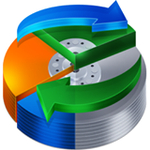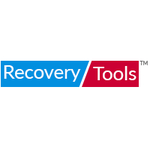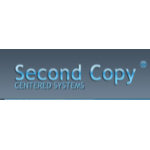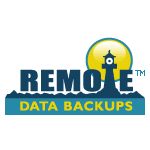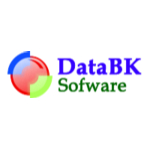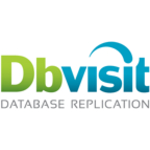TechnologyCounter provides genuine, unbiased real user reviews to help buyers make informed decisions. We may earn a referral fee when you purchase through our links, at no extra cost to you.
List of 15 Best Business Continuity Management Software
Showing 1 - 15 of 39 productsNinjaOne the ultimate software solution for streamlining your daily tasks and boosting productivity. With its user-friendly interface features, NinjaOne simplifies your workflow and empowers you to achieve more in less time. Say goodbye to cluttered...Read NinjaOne Reviews
RS Data Recovery is a tool designed to retrieve lost or deleted data from various storage devices such as hard drives, USB drives, and memory cards. Our software utilizes advanced algorithms to ensure the highest success rate in data recovery. Let RS...Read RS Data Recovery Reviews
Kuali Ready is a software designed to streamline disaster preparedness and business continuity planning for organizations. With its advanced features and user-friendly interface, Kuali Ready empowers businesses to effectively manage potential risks a...Read Kuali Ready Reviews
RecoveryTools a powerful solution for all your data recovery needs. This versatile software is designed to effortlessly retrieve lost, deleted or corrupted files from any type of storage device. With its user-friendly interface algorithms, RecoveryTo...Read RecoveryTools Reviews
Second Copy, a reliable backup and synchronization software that ensures your important files and data are always safe and up-to-date. With user-friendly features and a seamless interface, Second Copy simplifies your backup process and gives you peac...Read Second Copy Reviews
Remote Data Backup, is a solution to secure and protect your valuable data. With its state-of-the-art technology, Remote Data Backup provides a seamless is a way to store your files remotely, safeguarding them from potential loss or damage. Dont risk...Read Remote Data Backup Reviews
Search and Recover 2 is a data recovery software that will give you peace of mind and save you from potential disasters. With its advanced technology and user-friendly interface, this software allows you to easily and quickly recover lost or deleted...Read Search and Recover 2 Reviews
DXi, the latest software that revolutionizes the way you work. With its advanced technology and user-friendly interface, DXi streamlines your workflow and increases productivity. Say goodbye to tedious tasks and hello to efficiency with DXi. Experien...Read DXi Reviews
White Backup is a solution for protecting your valuable data. With its advanced features and user-friendly interface, White Backup ensures that your important files are safeguarded at all times. Say goodbye to the worry of losing data and hello to pe...Read White Backup Reviews
SQL Server Backup is a software designed for data protection and disaster recovery solutions. With its advanced technology, it offers peace of mind to businesses and organizations in backing up their critical data and ensuring its availability in cas...Read SQL Server Backup Reviews
R-Studio is a data analysis and statistical programming software that revolutionizes the way researchers and analysts handle complex datasets. With its user-friendly interface and diverse range of tools, R-Studio allows users to efficiently manipulat...Read R-Studio Reviews
PeerSync is a file synchronization software designed to streamline your data management. With its advanced features and user-friendly interface, PeerSync enables seamless syncing of files between multiple devices, making it the perfect solution for i...Read PeerSync Reviews
Dbvisit Standby, a reliable is a database replication software that allows businesses to maintain high availability and disaster recovery for their Oracle databases. With Dbvisit Standby, organizations can protect their critical data and minimize pot...Read Dbvisit Standby Reviews
Neustar UltraDNS is a and innovative DNS management solution designed to optimize website performance, security, and reliability. With its advanced features and state-of-the-art technology, UltraDNS ensures seamless and fast domain resolution for bus...Read Neustar UltraDNS Reviews
onQ, the all-in-one software designed to streamline your business processes and drive success. With its intuitive interface and robust features, onQ empowers organizations of all sizes to optimize operations, enhance customer experiences, and increas...Read onQ Reviews
- What Is Business Continuity Management Software?
- Top Reasons Why Businesses Need Business Continuity Management Software?
- What Are the Top Key Features of Business Continuity Management Software?
- What Are the Top Benefits of Business Continuity Management Software?
- What Are the Steps to Choose the Right Business Continuity Management Software?
- What Are the Types of Business Continuity Management Software for Different Industries?
- What Are the Technology Trends for Best Business Continuity Management Software?
- What Are the Deployment Options for Business Continuity Management Software?
What Is Business Continuity Management Software?
Business continuity management software refers to a specialized type of software that is specifically developed to safeguard the continuity and resilience of a business, particularly in the face of significant disruptive events that have the potential to disrupt or halt its normal operations.
This is achieved by the provision of a diverse array of functionalities, encompassing the formulation of strategies for various scenarios, the identification of potential hazards, and the creation of comprehensive risk management plans.
Additionally, the business continuity software will offer instructions for the allocation of team responsibilities, the implementation of measures to ensure uninterrupted operations and recovery, and the evaluation and supervision of those measures.
In summary, business continuity management tools aids organizations in proactively preparing for and mitigating the consequences of significant interruptions, so enabling the business to sustain operations and secure its long-term prosperity.
Top Reasons Why Businesses Need Business Continuity Management Software?
1. One of the benefits of this approach is the reduction in expenses related to periods of inactivity, loss of data, and service interruptions.
2. One of the benefits of automation is the enhancement of operational efficiency through the streamlining of routine activities.
3. Establishes a complete documentation of essential tasks and processes that are vital to the functioning of a corporation.
4. Ensures adherence to industry norms and standards.
5. One of the key objectives is to mitigate the consequences of natural catastrophes and other unanticipated occurrences.
6. Safeguards confidential information from unauthorized access by malicious individuals.
7. Mitigates reliance on individuals for key system operations.
8. Enhances the efficiency of the recovery procedure in the occurrence of an incident.
9. The provision of an audit trail facilitates the monitoring and evaluation of performance.
10. The software produces comprehensive reports that effectively illustrate the outcomes.
11. Provides a robust risk management framework aimed at mitigating potential future incidents.
12. The monitoring of system availability and the proactive diagnosis of potential interruptions are undertaken.
13. Facilitates the prompt and effective coordination of response and recovery efforts.
14. The business continuity software provides a secure means for remote access and facilitates collaborative efforts.
15. The feature facilitates the timely generation of reports and the resolution of issues as they occur.
What Are the Top Key Features of Business Continuity Management Software?
1. Automation of Emergence Response: The utilization of top business continuity management software facilitates the automation of emergency response methods and offers timely updates to pertinent stakeholders.
2. Risk Analysis and Assessment: Business continuity software plays a crucial role in the analysis and evaluation of potential hazards and threats to operational activities.
3. Plan Development and Documentation: Business continuity management tools facilitates the process of formulating and recording recovery strategies for unforeseen disruptions that may impact enterprises.
4. Incident Management: The utilization of business continuity management software facilitates the automation of incident tracking and management functionalities.
5. Process Improvement: Business continuity software facilitates the identification and resolution of possible risk concerns prior to their escalation into significant disruptions to operational processes.
6. Database Management Capabilities: Business continuity management tools offers a comprehensive suite of tools designed to facilitate the storage and management of data pertaining to various events, potential risks, and recovery plan information.
7. Reporting and Dashboard Capabilities: The utilization of business continuity management software also encompasses the inclusion of reporting and dashboard functionalities, which serve the purpose of monitoring the advancement of recovery plans and any subsequent modifications that occur throughout the course of time.
8. Training and Awareness Programs: The utilization of business continuity software facilitates the establishment and execution of training and awareness initiatives within businesses, aimed at equipping the workforce with the necessary skills and knowledge to effectively respond to any disruptions.
What Are the Top Benefits of Business Continuity Management Software?
1. Improved Disaster Recovery: Top business continuity management software facilitates the expeditious recovery of enterprises in the face of unforeseen catastrophes, disasters, or operational disruptions. This measure aids in safeguarding the data, operations, and personnel of an organization.
2. Automated Compliance Monitoring: Additionally, the software streamlines the task of monitoring adherence to industry standards. By implementing automation, organizations have the ability to circumvent expensive fines and penalties associated with non-compliance.
3. Increased Agility: The software facilitates enhanced corporate agility, enabling prompt responses to dynamic market conditions and evolving client expectations. Furthermore, it aids organizations in optimizing their policies and procedures to guarantee they maintain a competitive edge.
4. Improved Resiliency: The utilization of business continuity management software enhances the resilience of enterprises when confronted with unforeseen occurrences or calamities. The program facilitates the maintenance of stability and functionality in essential operations and services during challenging circumstances.
5. Better Risk Management: The program facilitates the identification and mitigation of possible risks for firms, preemptively addressing them before they manifest as problematic issues. By effectively implementing risk management strategies and closely monitoring potential hazards, firms can mitigate the financial impact of losses and minimize disruptions to their operations.
6. Streamlined Business Processes: The best BCM software enhances operational efficiency by ensuring the implementation of standardized rules and procedures throughout the whole organization. This practice aids in the facilitation of seamless and optimal functioning of operations.
7. Improved Collaboration: The utilization of top business continuity management software facilitates seamless collaboration and coordination among teams in the execution of duties. This practice aids in facilitating prompt responses by teams to unforeseen incidents or interruptions in operational processes.
8. Cost Reduction: The utilization of business continuity software has the potential to mitigate the overall expenses linked to catastrophe recovery and risk management. The software's automated capabilities contribute to the reduction of operational expenses and the mitigation of risk.
What Are the Steps to Choose the Right Business Continuity Management Software?
1. Identify your business requirements: Prior to making a commitment to any business continuity management software, it is imperative to ascertain and analyze both your current and projected company requirements.
This entails the careful consideration of several factors such as the objectives, scope, budget, timetable, and resources required for the successful implementation of the program.
2. Research & Compare Software Options: Once the business requirements have been defined, it is advisable to conduct research on various software options that align most effectively with the firm. Examine the characteristics and capabilities, conduct a cost analysis, and peruse feedback from both present and former users.
3. Consider the Technical Specifications: Top business continuity management software encompasses a diverse array of technological functionalities, including but not limited to encryption, access control, cloud storage, data archiving and recovery, and security standards.
When conducting research on software options, it is important to carefully evaluate the specific characteristics that will provide advantages for your firm.
4. Talk to a Vendor: Once the selection process has been refined and a reduced set of software possibilities has been identified, it is advisable to engage in discussions with vendors in order to address the specific features sought and ascertain their possible assistance in facilitating the installation process.
5. Test the Software: After the software has been chosen, it is crucial to conduct thorough testing and evaluation of the product or service before its implementation inside the organization.
6. Implement the Software: After conducting thorough software testing and achieving satisfactory outcomes, the firm is prepared to proceed with the implementation of the business continuity software. Engaging the services of a skilled IT service provider can prove advantageous in this undertaking.
What Are the Types of Business Continuity Management Software for Different Industries?
The availability of business continuity management software for different industries is contingent upon the specific service offerings provided by each respective vendor.
In a broad sense, these can encompass:
1. Disaster recovery software: This particular software facilitates enhanced preparedness of firms' systems and networks in anticipation of a disaster scenario. Typical characteristics encompass the provision of backup and restoration functionalities, the ability to simulate disasters, and the formulation of system recovery plans.
2. Incident management software: The best BCM software facilitates enhanced management of post-disaster events for enterprises. This program offers functionalities such as risk management, incident mapping, virtual meetings, and reporting, as well as incident response tactics.
3. Business continuity planning software: This program facilitates the development and oversight of business continuity plans for enterprises. Common features found in this software system encompass document management, reporting capabilities, assessments functionality, as well as access and maintenance logs.
4. Business continuity management software: The business continuity management tools are specifically developed to assist firms in effectively managing their business continuity activities. Typical characteristics encompass audits, action plans, control monitoring, and incident management.
5. Data privacy protection software: This particular software aids firms in safeguarding consumer data and ensuring adherence to data privacy requirements. This type of software may encompass features such as encryption, anonymization, and compliance tracking.
Irrespective of the sector, the paramount consideration in the choice of a business continuity management software lies in its alignment with the distinct aims and requirements of the firm.
What Are the Technology Trends for Best Business Continuity Management Software?
Technology trends for best business continuity management software include:
1. Cloud-based and Mobile Applications - Cloud solutions provide businesses with the capability to conveniently access their data from any location and at any time, hence facilitating the adaptability to tailor their business continuity plan in response to evolving circumstances.
Mobile applications offer users the convenience of monitoring and overseeing business continuity management (BCM) processes at any given time and location.
2. Automation - The implementation of automation in the best BCM software facilitate enhanced efficiency and effectiveness in the administration of BCM procedures. The implementation of automated procedures and data tracking has the potential to enhance both accuracy and efficiency.
3. Integrated Risk Management - The integration of risk management components, including risk assessment, threat identification, impact analysis, and mitigation planning, within the best business continuity management software systems has the potential to enhance the efficacy of BCM programs.
4. Disaster Recovery – It is imperative for business continuity plans to encompass recovery procedures for many components such as IT infrastructure, applications, data, and other valuable assets. The utilization of business continuity software has the potential to facilitate the formulation of robust catastrophe recovery strategies.
5. Improved Visibility and Reporting - The utilization of business continuity management tools facilitates the enhancement of transparency pertaining to BCM endeavors, while also enabling the monitoring and evaluation of advancements made in this domain.
The generation of reports might serve the purpose of creating an audit trail for the business continuity management (BCM) process.
What Are the Deployment Options for Business Continuity Management Software?
The deployment of the best business continuity management software can vary depending on the unique requirements of the firm.
Several often encountered choices encompass the subsequent alternatives:
1. On-premise software: The conventional deployment option entails the physical installation of the software on hardware situated at the premises. The responsibility of managing all upgrades and changes to the business continuity software, as well as handling security and other IT requirements, lies with the organization.
2. On-demand software (Software-as-a-Service): This particular model is a deployment option that relies on cloud-based infrastructure, wherein the best BCM software is hosted and managed by a third-party vendor. The provider assumes responsibility for ensuring regular updates and maintaining security measures.
Organizations are granted access to the program in accordance with their specific requirements.
3. Hybrid software deployments: This paradigm integrates the advantages of both on-premise and on-demand software, enabling enterprises to select the deployment methods that most effectively align with their specific needs.
4. Mobile deployments: This concept provides customers with the opportunity to effectively oversee and control their business continuity plans using portable electronic devices, including smartphones, tablets, and laptops.
These deployment options have the potential to assist enterprises in developing a robust Business Continuity Management plan that aligns with their unique requirements.

